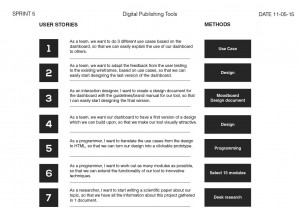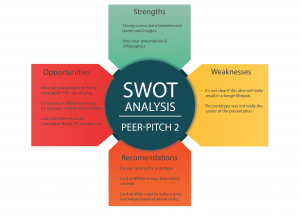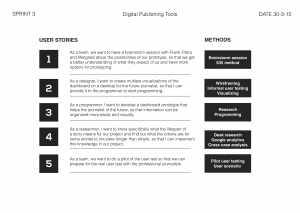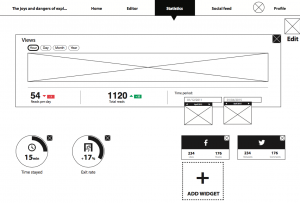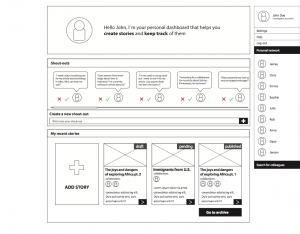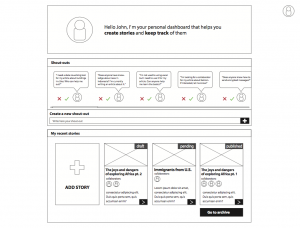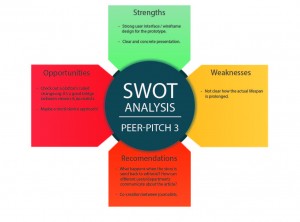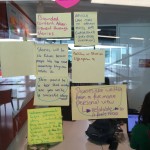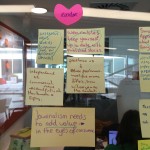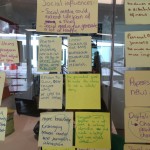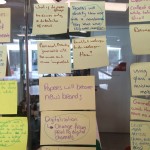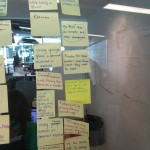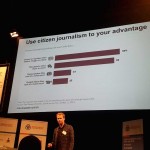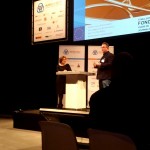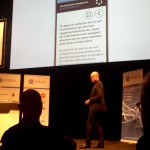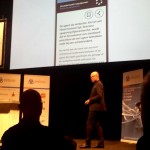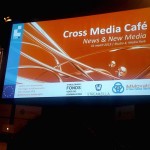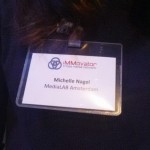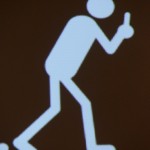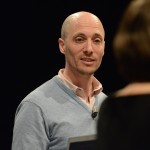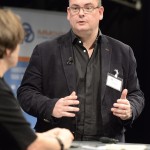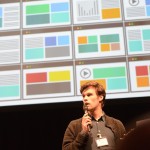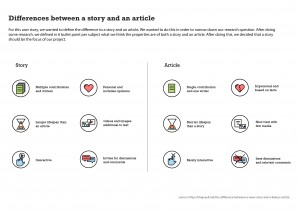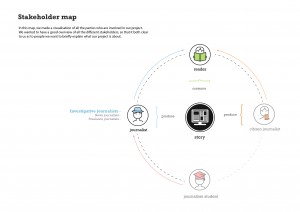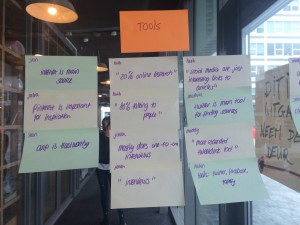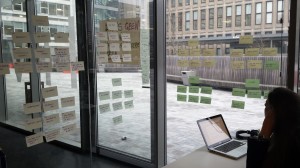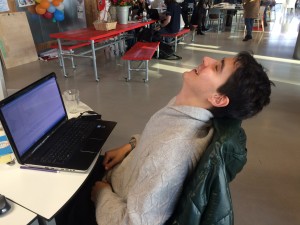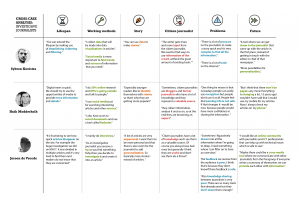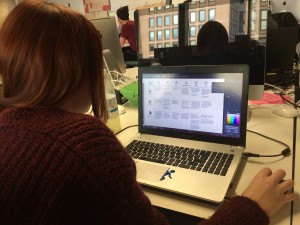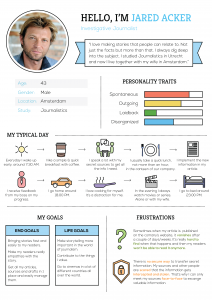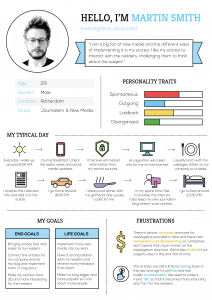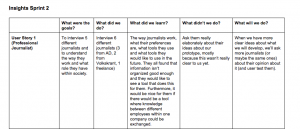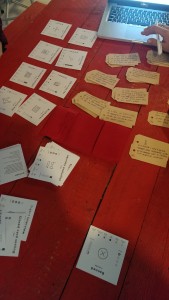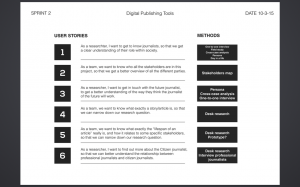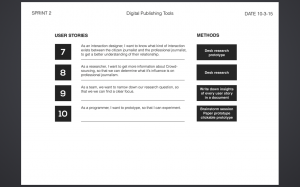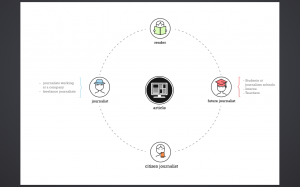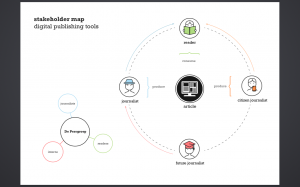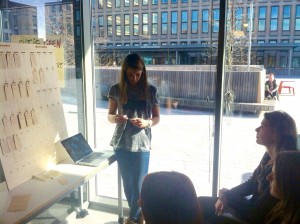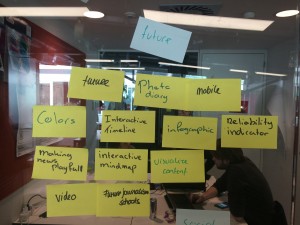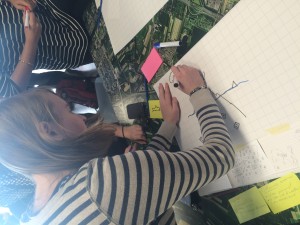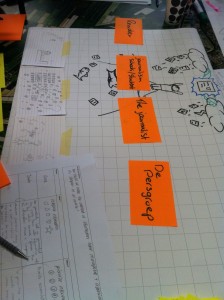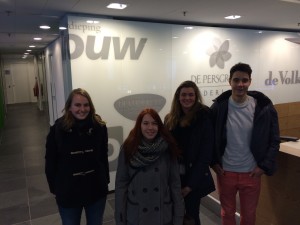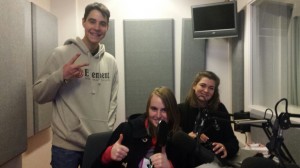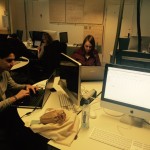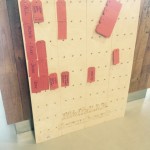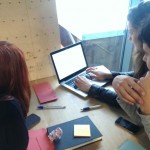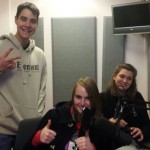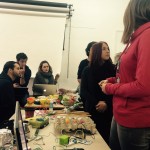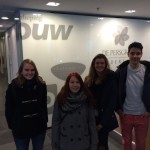The Business Model Canvas Workshop
On the 13th of May, we had a workshop business model Canvas. The designers of our team, Nikki and Michelle, already worked with this model before, but me and Javier did not. Before the workshop started, we all agreed it would be a good idea to think about the future possibilities of the tool we are currently developing. At the beginning of the workshop, we all had to define our passion, our talent and what makes us angry. This had to be done individually. After we defined it, the instructor told us the most important thing in developing a business model, is passion. When running a company, passion is the most important factor. After we all came up with a sentence where these elements were put together (with my passion for X and my talent for Y I want to fix what makes you angry), we were introduced to the business model canvas via the following YouTube video:
In this video, there clearly explained how the business model canvas works and how all the different parts of the business model canvas are connected. Therefore, it’s very important to really think the whole model through. To start with this, we were given the assignment to think about different things for the customer job, the gains and the pains. As an example of the customer job, the instructor told us about hanging a painting. Someone would do it to have the final goal of enjoying the painting. Like this, it would go even further than a gain. We listed those three elements like this:
Customer Job:
-
To simplify the working method of the future journalist
-
To have the work of the future journalist done faster
-
To give the journalist of the future more impact on society
Gains:
-
To give the future journalist a more organized workspace
-
To extend the lifespan of a story/an article
-
To let knowledge be exchanged more easily
Pains:
-
The journalist of the future would be restricted to 1 platform
-
The platform that the journalist of the future would use, would just be online
-
There could be a safety issue about a ‘safe way’ of exchanging knowledge
Our Business Model Canvas
When we had the workshop last week, we were making use of sticky notes. This was really helpful, because it gave us a great overview of all the different parts of the business model. Furthermore, it gave us the possibility to move the stickies around, preventing us from making mistakes. Here, I’ll list the most important stickies for each box within the business model canvas.
Key partners:
-
De Persgroep
-
Journalism Schools
-
Future journalists
-
Freelance Journalists
Key Activities:
-
Design an easy and understandable user-interface
-
Keep in touch with users to define their needs
-
Be innovative
Key Resources:
-
Innovation manager
-
New Media Researcher
-
Programmer
-
UI and UX designers
Value Propositions:
-
A more organized workspace
-
Extend the lifespan of an article
-
Easy knowledge exchange
-
To combine innovation and usability
-
Easy usability
-
Higher productivity
Customer Relationships:
-
Automated User Feedback
-
Self Service
Channels:
-
Distribute within a news company
-
Distribute via networks of key partners
-
Sales
-
If successful: distribute it on the web for bloggers or citizen journalists
Customer Segments:
-
Social media marketeers
-
The independent future journalist
-
Book writers
-
Translators
-
Future news companies
-
Journalism students
-
Future citizen journalists
-
Any future blogger
Conclusions
At the end of the Business Model Canvas Workshop, our instructor told us that everything we had done so far, was useless. We all looked strangely at each other, but when he explained his remark, it made sense: when creating a business model, you should know all the things you write down for sure. For now, everything we did were ‘just’ assumptions and would therefore need to be confirmed. Despite of the fact we don’t have so much time left, we want to see whether we can determine how our business model would look like in the future. Therefore, we’ll keep adapting our business model in the future.







